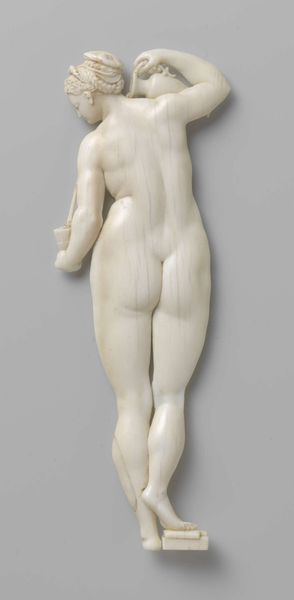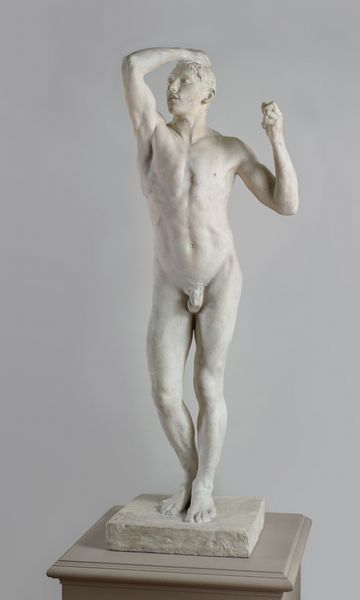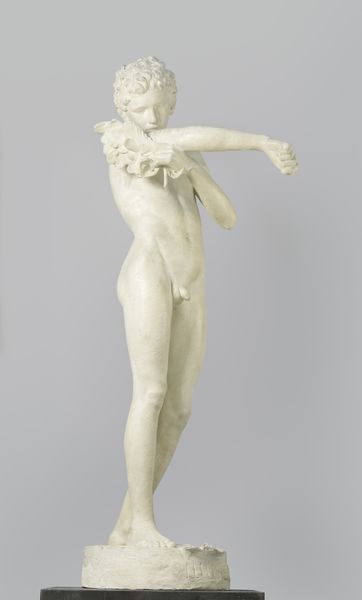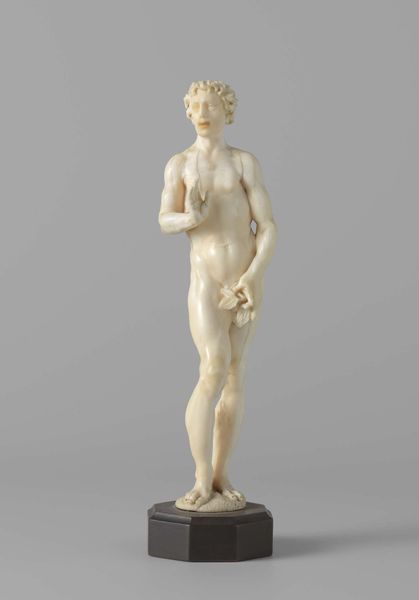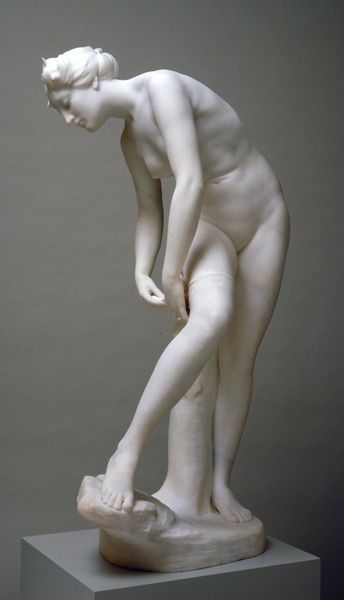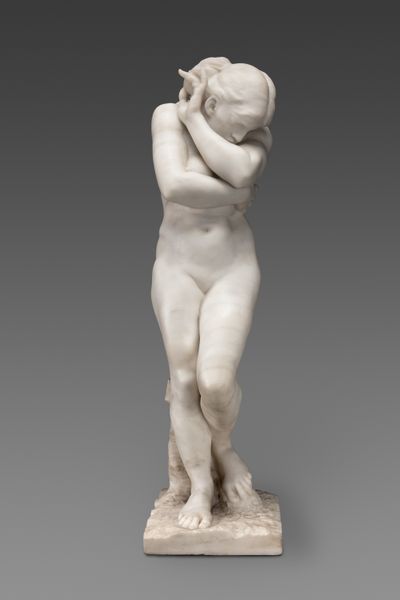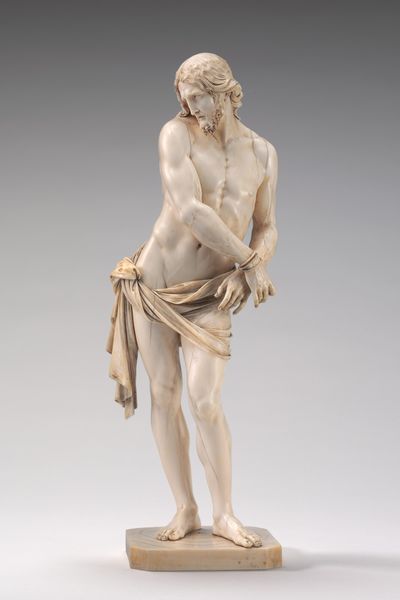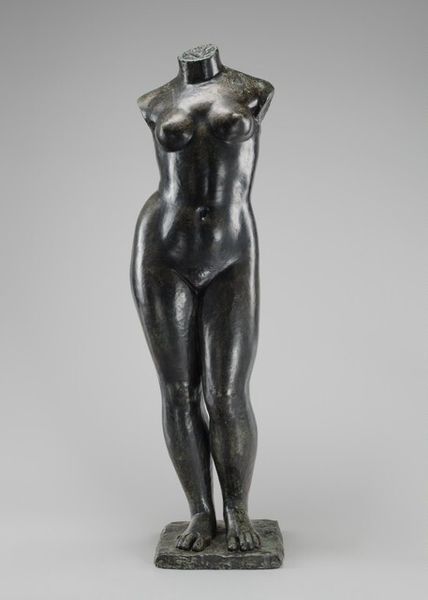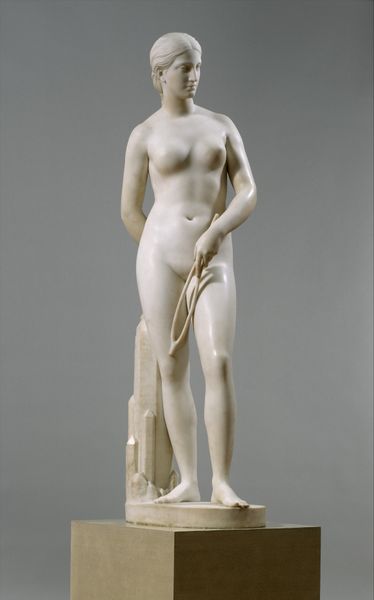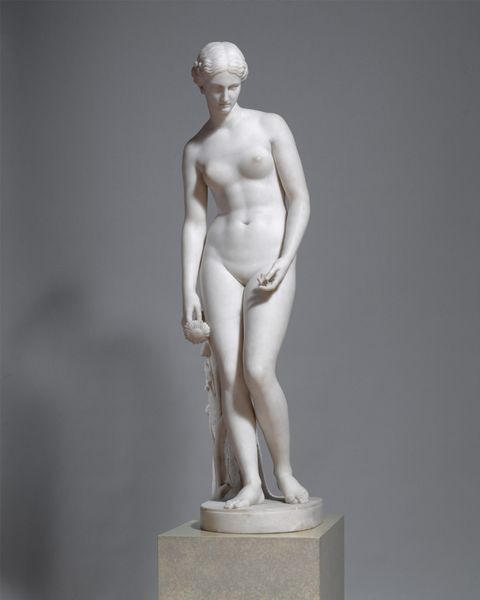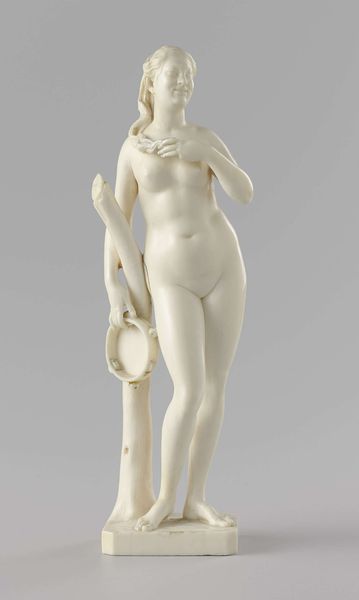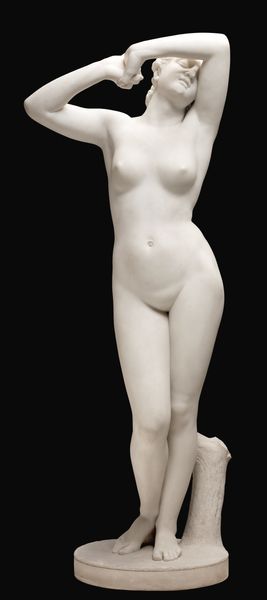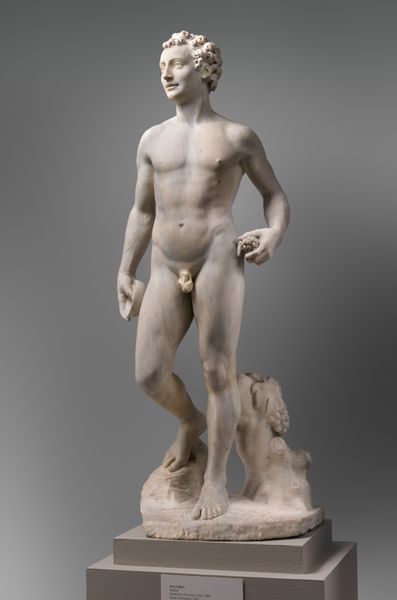
sculpture, marble
#
baroque
#
figuration
#
sculpture
#
marble
#
nude
Dimensions: height 20.5 cm, width 5.5 cm, depth 4.5 cm
Copyright: Rijks Museum: Open Domain
Editor: This is Jan Baptist Xavery’s "Nymph and Satyr," a marble sculpture from 1729. It has such a smooth and elegant quality. What strikes me, though, is how playful yet subtly unsettling the gaze of the Satyr is. How do you see this piece through a historical lens? Curator: It’s interesting that you pick up on the gaze. Baroque sculpture often sought to evoke strong emotions and theatricality. Looking at this today, especially with its prominent display in museum settings, it’s important to consider the power dynamics inherent in the display of the nude figure and its viewers through art history. Editor: Power dynamics? Can you elaborate? Curator: Well, think about the traditional role of classical mythology and art as signifiers of status and education for wealthy patrons. The sculpture becomes an object of control. Moreover, the Satyr is looking down and to the side, which could suggest he has spotted the Nymph unaware of being seen, or it may simply hint to other allegories related to this type of baroque art. How might the intended audience, those wealthy patrons, have perceived this 'playful' Satyr in the context of their social privileges? Editor: That gives me a lot to consider. So, it is a romanticized figure or social statement for elites who viewed the pieces? Curator: Both! Xavery’s choice to immortalize these mythological figures in marble is a direct reflection of the tastes and social structures of the time. The work's display contributes to a continued validation, or maybe even reinterpretation, of that social framework. I wonder how the political tensions of the time could relate to the idealized figures… Editor: This has definitely made me rethink how I view these classical sculptures in a museum setting! Curator: Indeed. Reflecting on the artwork and its many social roles in a collection setting is really valuable for interpreting its function in our society.
Comments
rijksmuseum about 2 years ago
⋮
At first sight, these two figures appear to be Classical nudes. However, the male figure’s mocking smile, short horns, pointed ears and tail betray the fact that he is a satyr. His companion is an elegant wood nymph. The satyr’s pipes and the nymph’s tambourine are references to music and dance, their favourite pastimes in the mythical, idyllic world of Arcadia.
Join the conversation
Join millions of artists and users on Artera today and experience the ultimate creative platform.
